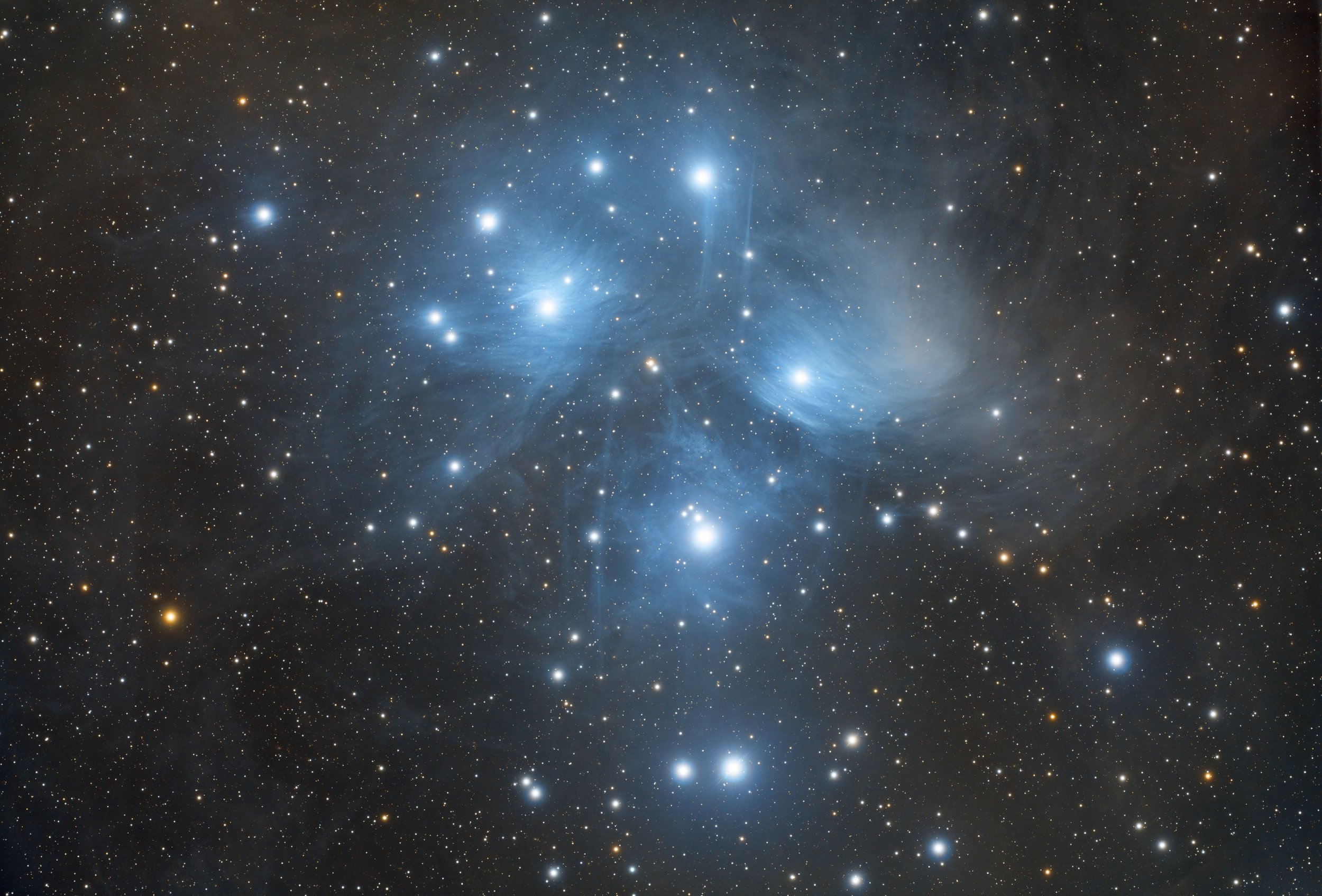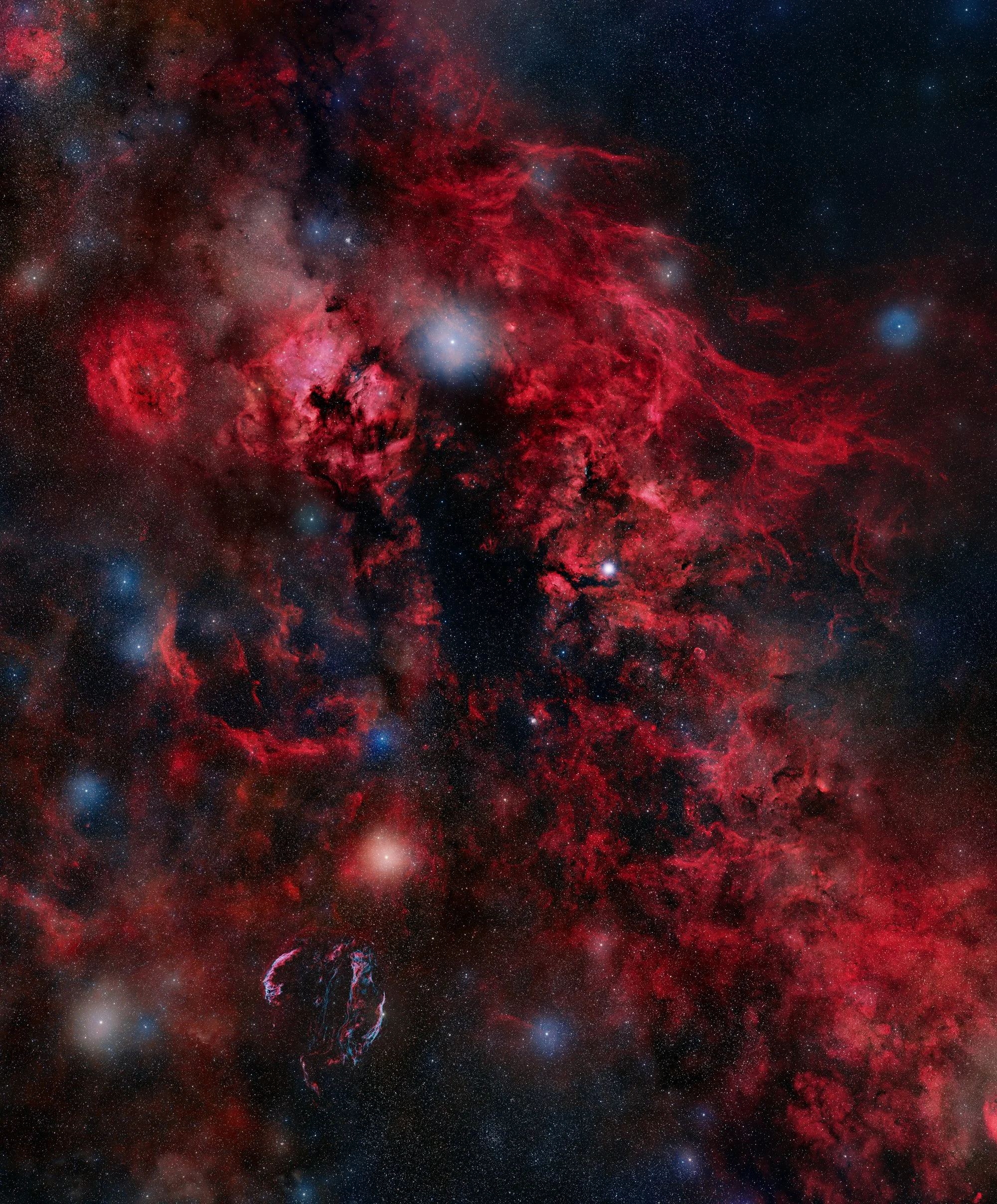
AAPOD2 Image Archives
Cygnus
This expansive super wide-field image provides a breathtaking view of the Cygnus region, immersing viewers in the cosmic symphony of this celestial expanse. Crafted using luminance (L), red, green, blue (RGB), and hydrogen alpha (Ha) filters, this LRGBHa composition accentuates the diverse and intricate features that define Cygnus. The Veil Nebula, can also be seen (lower left ) a testament to a stellar explosion millennia ago, against the vast backdrop of the Cygnus constellation.
The Ha data enriches the image, unveiling the subtle glow of ionized hydrogen amidst the stellar tapestry. The RGB channels bring to life the natural hues of stars and interstellar dust, creating a vibrant and captivating panorama that extends far beyond the immediate vicinity of the Veil Nebula. The Cygnus region takes center stage, with its prominent stars, dark nebulae, and cosmic clouds weaving together in a harmonious display.
Cepheus and Cygnus
Cepheus, located in the northern hemisphere, boasts a remarkable emission nebula called the "Wizard Nebula" (NGC 7380), which exhibits a striking resemblance to a wizard casting a spell across the cosmos. Cygnus, also known as the "Swan," features the famous North America Nebula (NGC 7000), a vast cloud of gas and dust in the shape of the continent, captivating observers with its resemblance to the familiar shape of the North American continent.
Two Milky Ways
Image Description:
I have updated my large mosaic of the Milky Way with the high resolution imaging I did in 2021. The upper image is taken through H-alpha, SII and OIII filters and the lower one through HaRGB. All the major nebulosity is now taken at a focal length of 530mm. This gives the image very crisp detail when viewed as a whole. Other images around the major nebulosity were taken at focal lengths of 85mm and 14mm. This mosaic has a total of 216 panels and over 2200 hours of imaging time. It uses data taken over the last 3 years which is why in the HaRGB image Jupiter (which looks like a very bright star) is above Sagittarius and in the SHO image which I took 12 months later it is below. That's how far it moved in a year.
Equipment Used
Telescope Canon 35mm L Series Lens, Sigma 85mm Lens, Takahashi TOA-130/FSQ 106 (Detail for the Nebulae)
Camera STL-11000M/STXL-11002M (Detail of the Nebulae) and SBIG STF-8300 and Canon 6D DSLR for the Widefield
216 image Mosaic with ~2268 hours of imaging through RGB. H-alpha, SII and OIII filters.
Copyright: Alistair Symon



